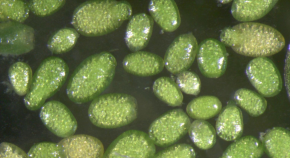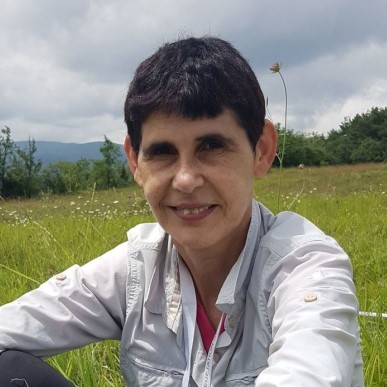Collection
Plant communities in changing environment
- Submission status
- Closed
Changing environment strongly shapes plant diversity and a whole vegetation over all spatial scales. Plant, habitat and functional diversity is conditioned strongly in space and time by various factors, climate, water regime, snow conditions, and human activities, included.
The Special Issue will bring a set of reviews, research original articles, short communications about all these aspects that change environment and subsequently affect plant communities in all aspects of ecosystems. The papers on management and policy issues related to conservation programs and the global control changing environment will be also of interest of this special issue.
Editors
-
Katarína Hegedüšová (0000-0002-2483-8575)
Institute of Botany, Department of Biodiversity and Ecology, Slovak Academy of Sciences, Bratislava, Slovakia. Katarína Hegeüšová is a senior researcher at Plant Science and Biodiversity Centre of Slovak Academy of Sciences, Institute of Botany, the Managing Editor of the Botany section of Biologia. She deals with classification, changes and evaluation of time-spatial dynamics of vegetation and synanthropization of forest vegetation. She also deals with the spread of invasive species and their penetration into the original communities.
-
Milan Valachovič (0000-0001-5295-5240)
Institute of Botany, Department of Biodiversity and Ecology, Slovak Academy of Sciences, Bratislava, Slovakia. Milan Valachovič is a senion researcher at the Institute of Botany, Center for Plant Science and Biodiversity, Bratislava, Slovakia. In general, the main topics of his research are closely related to the vegetation of the Carpathians, especially to the classification of plant communities. He was the head of the long-term program Plant Communities of Slovakia, which resulted in a series of six books.
-
Sándor Bartha (0000-0001-6331-7521)
Institute of Ecology and Botany, Centre for Ecological Research, Vácrátót, Hungary Sándor Bartha is a senior researcher at the Institute of Ecology and Botany, Centre for Ecological Research, Vácrátót, Hungary. His work focuses on grassland community ecology but he is also interested in functional ecology, primary and secondary succession, climate-change experiments and long-term monitoring (repeated mapping) of fine-scale spatial patterns in grasslands. Using spatially explicite individual based models and spatial statistics he links observed spatiotemporal data with theory. He studies assembly rules and interested how fine-scale spatial st
-
Jozef Šibík (0000-0002-5949-862X)
Institute of Botany, Department of Biodiversity and Ecology, Slovak Academy of Sciences, Bratislava, Slovakia. Jozef Šibík is a senior researcher at Plant Science and Biodiversity Centre of Slovak Academy of Sciences, Bratislava, Slovakia. He is a specialist for the alpine and arctic vegetation, its ecology and dynamics. He has worldwide field experiences from ecosystems of four continents (South and North America (including Alaska), Europe and Africa). His studies are of an international importance for the ecology of species and communities, syntaxonomy and vegetation dynamics; enhancing the knowledge on the transnational level. The result
-
Idoia Biurrun
ORCID-ID: 0000-0002-1454-0433 Idoia Biurrun is associate professor at the Faculty of Science and Technology of the University of the Basque Country in Bilbao, Spain. Her main interests in vegetation science include vegetation classification, vegetation-environment relationships, conservation biology and plant invasions, mainly in rivers, grasslands, forests and fens. Currently she is focused on resurvey studies to assess the impact of global change on natural and semi-natural habitats. She is also deeply involved in the development of vegetation-plot databases.
Articles (13 in this collection)
-
-
Typha laxmannii (Typhaceae) in Ukraine: current distribution, еcological and coenotic pecularities, invasiveness
Authors (first, second and last of 8)
- Myroslav V. Shevera
- Oleksandr O. Orlov
- Olga I. Stotska
- Content type: Original Article
- Published: 19 March 2024
- Pages: 1147 - 1167

-
Bryophytes in classification and ecology of calcareous beech forests in Central Slovakia
Authors
- Pavel Širka
- Mariana Ujházyová
- Karol Ujházy
- Content type: Original Article
- Open Access
- Published: 29 November 2023
- Pages: 1209 - 1223
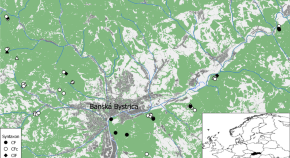
-
Mid-term changes of dry grasslands with conservation management in the Hainburger Berge Mountains
Authors (first, second and last of 4)
- Monika Janišová
- Martin Magnes
- Daniela Dúbravková
- Content type: Original Article
- Open Access
- Published: 27 November 2023
- Pages: 1091 - 1112

-
EU habitat directive bryophyte species distribution and conservation in Latvia
Authors (first, second and last of 5)
- Anna Mežaka
- Anete Pošiva-Bunkovska
- Baiba Bambe
- Content type: Original Article
- Published: 27 November 2023
- Pages: 1193 - 1207

-
Correction to: structure of forest stands of alien tree Quercus rubra in Central Europe
Authors (first, second and last of 7)
- Jana Májeková
- Jana Medvecká
- Iveta Škodová
- Content type: Correction
- Open Access
- Published: 14 November 2023
- Pages: 1177 - 1177
-
Structure of forest stands of alien tree Quercus rubra in Central Europe
Authors (first, second and last of 7)
- Jana Májeková
- Jana Medvecká
- Iveta Škodová
- Content type: Short Communication
- Open Access
- Published: 31 August 2023
- Pages: 1169 - 1176

-
The class Adiantetea in Georgia: a rare relict fern community in the South Caucasus
Authors
- Pavel Novák
- Tomáš Peterka
- Veronika Kalníková
- Content type: Original Article
- Published: 24 July 2023
- Pages: 1129 - 1137

-
Key ecological determinants of the reproductive success and conservation strategy of Delphinium pentagynum subsp. formenteranum (Ranunculaceae), an endangered endemic species of the western Mediterranean Basin (Balearic Islands)
Authors (first, second and last of 4)
- Leonardo Llorens
- Marcello D. Cerrato
- Lorenzo Gil
- Content type: Original Article
- Open Access
- Published: 18 July 2023
- Pages: 1179 - 1191

-
Changes in the Nardus grasslands in the (Sub)Alpine Zone of Western Carpathians over the last decades
Authors
- Andrej Palaj
- Jozef Kollár
- Martina Michalová
- Content type: Original Article
- Open Access
- Published: 17 July 2023
- Pages: 1081 - 1090
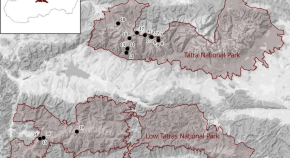
-
Floristic classification of Geranion sanguinei in South Moravia (Czech Republic)
Authors
- Klára Klinkovská
- Jan Roleček
- Content type: Original Article
- Published: 12 July 2023
- Pages: 1113 - 1127

-
Cryptic molecular-geographical divergence among Iranian Silene aucheriana populations inferred from ISSR and climatic data
Authors (first, second and last of 4)
- Masoumeh Safaeishakib
- Mostafa Assadi
- Iraj Mehregan
- Content type: Original Article
- Published: 24 April 2023
- Pages: 1225 - 1235
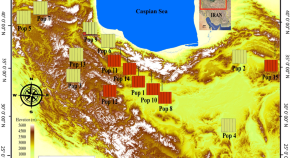
-
Asian Wolffia globosa (Roxb.) Hartog & Plas (Araceae) in Bohemian Wetlands – a new macrophyte for Czechia
Authors (first, second and last of 5)
- Michal Vávra
- Jan Špaček
- Jan Rydlo
- Content type: Original Article
- Published: 18 April 2023
- Pages: 1139 - 1145
